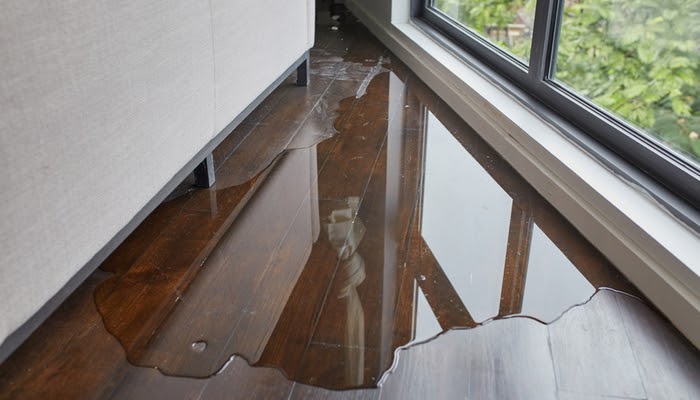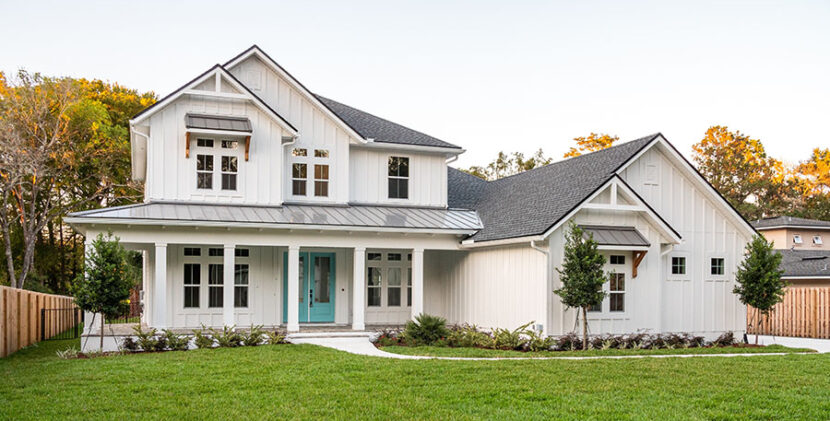Learning Center » Home Improvement
How to Prevent Water Damage In Your Home

There are many ways to protect yourself against expensive water leaks and insurance claims. Follow these easy tips to keep your home well-maintained and safe.
Disconnect Hoses
Water standing in a hose can freeze back into the pipe and make an ice block that can stop your water flow or, even worse, burst your pipes and cause damage to floors, walls, and foundation.
Clean Downspouts and Gutters
Over time, your gutters will fill with seeds, leaves, and other debris and eventually clog. It’s important that you clean them routinely, preventing them from clogging and spilling water down the side of your house, which can damage your siding and foundation.
Clean the gutters at least twice a year to avoid ice dams and blockage. Standing water may cause damage to your roof and gutter, and the overflow can create puddles that can cause damage to your foundation. Don’t forget to clean your downspouts to make sure the water is able to flow through. Also, you need to make sure the downspouts are secure so that they point away from the house, directing water 5 to 10 feet away from your home.
Maintain Vegetation and Trees
Vegetation can be a beautiful thing – except when its roots wrap around pipes and break them. That’s why it’s important to minimize vegetation near utility pipes or remove shrubs and trees that have become too big.
Know Your Water Main
Know where your water main is and shut it off if you leave for a long period of time. If no water goes into the home, faucet drips won’t be able to wreak havoc in your house!
Check Appliances Regularly
Maintain and check your appliances regularly for leaks according to the manufacturer’s instructions.
Investigate Leaks Right Away and Promptly Fix Them
If you choose to ignore moisture damage or postpone repairing it, be ready to experience mildew, dry rot, mold, or even structural damage to your house. Note that homeowner’s insurance provides coverage for sudden and accidental damage, but damage that results from lack of maintenance is not typically covered by a homeowner’s insurance policy.

If you know you have a leak inside your home, do not wait to get it fixed. Because of the water pressure, fluctuations in humidity, supply lines, weather, and general water usage, you may underestimate the severity of a leak. It is necessary that any known leaks are handled with a permanent solution or that lines are fully replaced. Otherwise, you may be spending a lot of time mopping in the future.
Upgrade Washing Machine Hoses
Brittle, old, or leaky washing machine hoses are among the most common causes of water loss for homeowners. Replace them regularly to avoid a huge mess and damage.
Install Water Detection Devices
A water detector sounds an alarm when its sensor comes in contact with moisture. Its main advantage is that it detects low levels of moisture or small leaks that can go unnoticed. Install it near sump pumps, water heaters, washing machines, dishwashers, and toilets to prevent mold growth and extensive damage.
Check Your Water Pressure
If the water pressure to your house is set too high, hoses and pipes may fail under pressure. Purchase a water pressure gauge and attach it to an outside faucet, then turn the faucet to full force. The gauge will show you a reading of your home’s water pressure. If your water pressure is more than 100psi, you should install a pressure regulator (also available at hardware stores).
Monitor Your Water Bill
Sometimes, the only way you’ll know that water is leaking is by looking at your water bill. If your usage is significantly higher one month in comparison to the last without explanation, you need to find out why. Could it be a leak in your crawlspace? Or, could it be a pipe in your front yard? Don’t let these mystery leaks go unnoticed!
Ensure Proper Drainage
Having proper drainage is the first step in preventing damage caused by heavy downpours and rainwater. Poor drainage can weaken your foundation, causing cracks in the concrete foundation, pooling of water, uneven settling, and creating pathways for water to get into your home.
Inspect Your Roof
If you have a serviceable roof, you want to go up there and inspect your tiles or shingles and make sure none of them are loose, damaged, or missing. You should also consider having your roof cleaned professionally.
Check Irrigation Systems and Sprinklers
Make sure your irrigation systems and sprinklers aren’t pooling water near the foundation or damaging your home’s siding.
Do you live in an area with cold temperatures? Make sure to drain and turn off any outside hoses or faucets to protect against water freezing inside of the pipes and causing them to burst.
Seal Windows and Doors
Snow and rain can easily invade your house through poorly fitted windows or doors, especially together with strong winds blowing against your home.
Inspect Showers, Tubs, and Toilets
Your tubs and showers are constantly being exposed to water. Usually built with glass and tile enclosures, they drain water and prevent any water flow outside of the designated areas. Over time, the grout or caulking between tiles can get damaged. Be sure to caulk and fix these grout lines wherever necessary to prevent water from damaging the underlying drywall.
Plant Bushes, Trees, and Other Vegetation around Your House
If your yard is flat, having a good drainage system may not be enough to withstand even the lightest of rainstorms and prevent water damage and flooding. Fortunately, trees, plants, and bushes can help improve your yard’s drainage. Bushes and trees have complex, long root systems that can “soak up” the rainwater. Also, vegetation can slow the flow of water in your yard, making it less likely to make it to your house and cause flooding. And finally, adding vegetation can improve your home’s curb appeal!
Are you thinking about a home improvement project? Feel free to contact 1-800-HANSONS for a free estimate.
Get a Free Estimate Today
70% off installation. Special financing available. See details.













